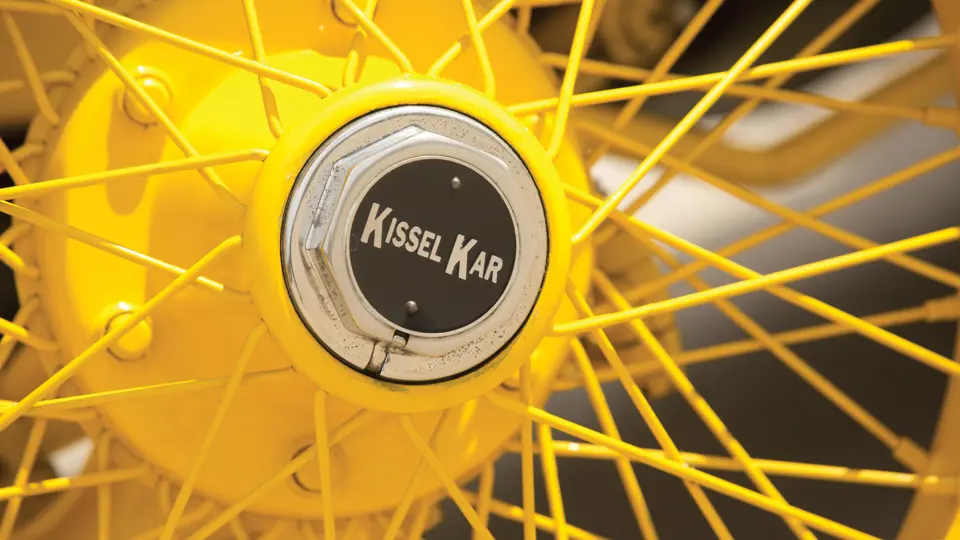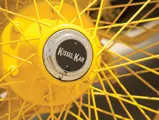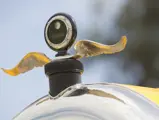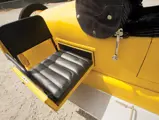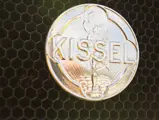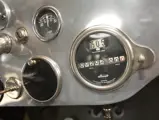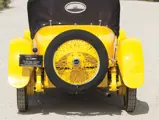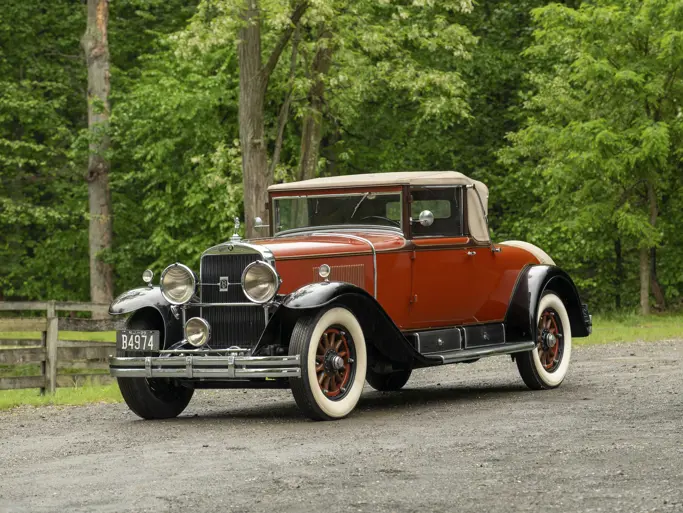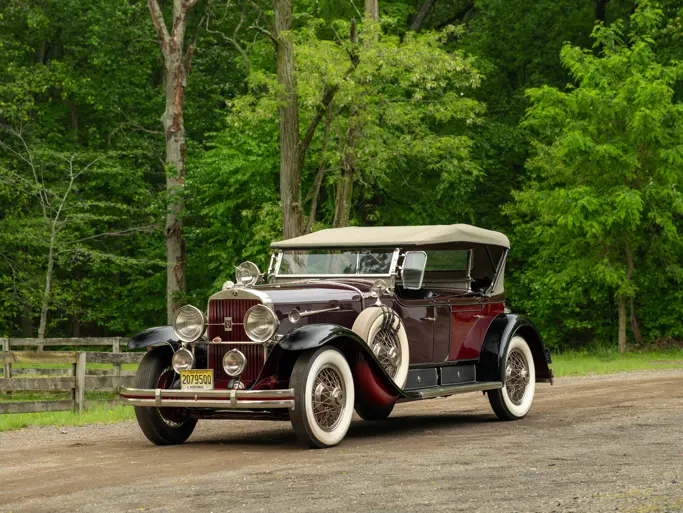
1920 Kissel Model 6-45 'Gold Bug' Speedster
{{lr.item.text}}
$160,000 - $200,000 USD | Not Sold
{{bidding.lot.reserveStatusFormatted}}
- An outstanding example of an iconic American sports car
- One of two restored 1920 Speedsters known
- Formerly owned by the Bent family, Bill Harrah, and Tom Harrington
- Beautifully finished and presented
61 bhp, 338 cu. in. L-head inline six-cylinder engine, three-speed manual transmission, semi-elliptic front and rear suspension, and rear-wheel mechanical brakes. Wheelbase: 120 in.
The Kissel Speedster holds rank among the most honored and appreciated early American sports cars. It originally debuted in January 1919 as a custom-built special at the Chicago Auto Show, and it had been developed by stylists working under New York distributor Conover T. Silver. With its high cowl and bending hood, the doors and rear of the Speedster’s body were lowered, creating a streamlined look. In addition, the top folded in a “jack-knife” fashion, to nestle into the rounded body counter, keeping the appearance of the car smooth and uncluttered. The model’s claim to fame was a pair of occasional seats that slid out from the bodywork just behind the passenger compartment, for carrying two brave, or foolhardy, passengers.
The first Speedster, displayed at Chicago, was painted Kissel’s Chrome Yellow, and the factory soon adopted the popular nickname “Gold Bug” for the style. Between 50 and 100 were built per year between 1919 and 1931, when Kissel production ended, with satisfied buyers including Amelia Earhart, Ralph de Palma, and Al Jolson. Thirty-seven Speedsters survive today, in all of their variations.
This particular car is one of only several 1920 models remaining, and it is also one of only two that have been restored. Importantly, its history has been traced back to 1921, when the year-old Speedster was bought by Charles T. Bent, of Rhode Island, for the purpose of taking his new wife on their honeymoon to Niagara Falls. Not surprisingly for an ownership with such sentimental beginnings, the Speedster became a staple of the Bent family’s life for the next 37 years. It was even used by the couple’s daughter, Bernice, to commute to and from college, before being sold to antique dealer Ralph Murphy in 1958.
The Kissel eventually passed to George Hall and then Eugene Husting, in whose care it was shown at the VMCCA’s Antique Auto Museum in Brookline, Massachusetts. While being wheeled out from one of the VMCCA’s meetings, it caught the eye of Bud Catlett, who acquired it for Harrah’s Automobile Collection, where it remained for several years.
Several more owners followed, ending with Alfred Koller, a Swiss diplomat living in Washington, D.C. Mr. Koller had the Kissel fully restored by Penn Dutch, of York, Pennsylvania, after which it was awarded AACA First Junior and Senior awards. The car later traveled to Europe, one of very few Kissels to have done so, and it was owned by noted collector Tom Harrington, of France, before returning stateside.
In its current ownership, the Speedster was given a full, fresh cosmetic and mechanical re-restoration, bringing it to utterly show-quality condition. It is finished in the classic Chrome Yellow, with matching wire wheels, blackwall tires, and black leather upholstery, and its details are a delight: two trunks, a rear-mounted spare, a polished aluminum dashboard, a detailed instrument panel loaded with gauges, a chromed steering column and top bows, beveled glass wind wings, an abbreviated windshield, a spring-loaded Halliday front bumper, a Kissel-branded MotoMeter, and even a jack and tools. It is show quality throughout, but it has been shown only once, at a Kissel meet in Wisconsin, so it will definitely be welcomed to shows with its new caretaker.
Perhaps most satisfyingly, the Speedster was recently road-tested by Michael Bowler for The Automobile magazine. He reported, “With steering wheel controls for throttle and advance-retard, it starts easily and ticks over sweetly. The gears are rather noisy in first and second, but there is so much torque that gear-changing can be kept to a minimum—not a difficult box anyway. We trundled off down the main roads and were soon loping along at a 45 mph with the hood down.” Bowler summed up the Kissel as “a charming touring car.”
No collection of American sporting cars is complete without a Kissel Gold Bug. With only 37 remaining, and with only one other being a 1920 model, the opportunity to acquire this outstanding, well-restored, and historic example is one not to be missed.






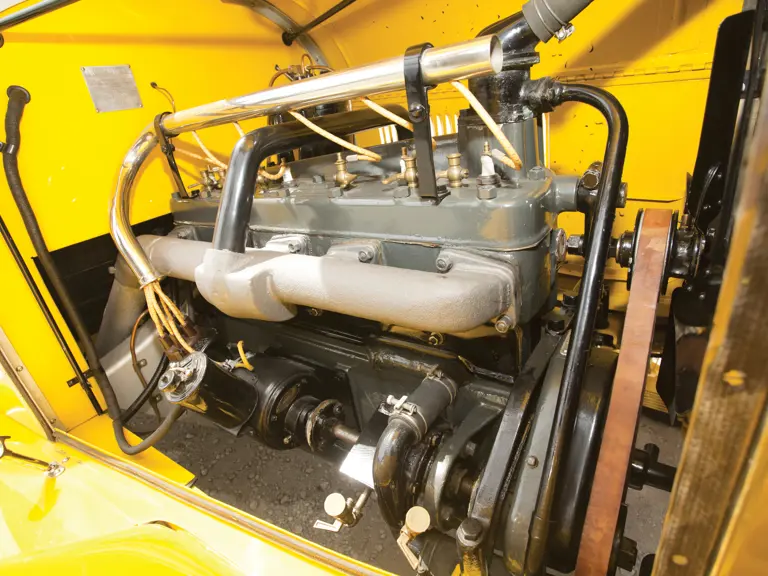


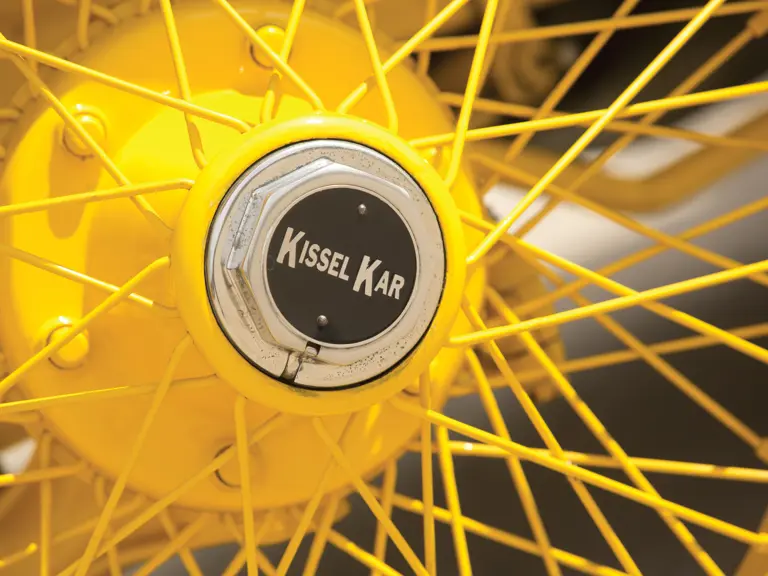
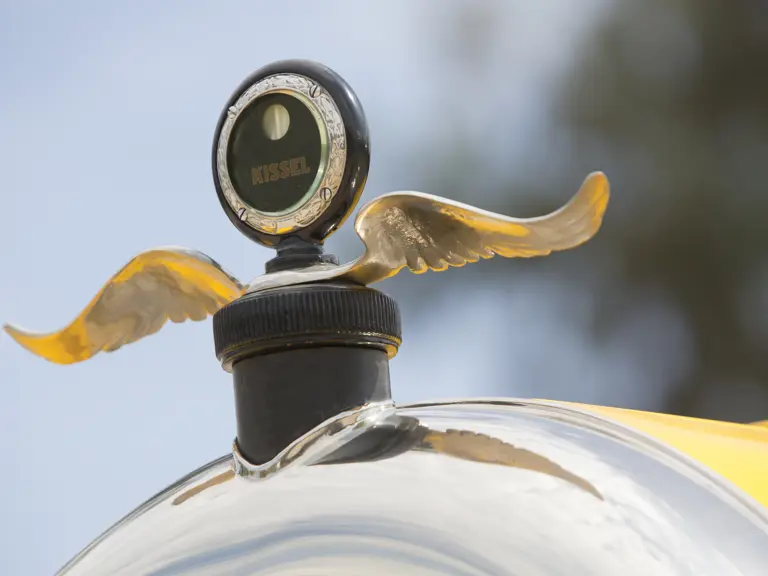


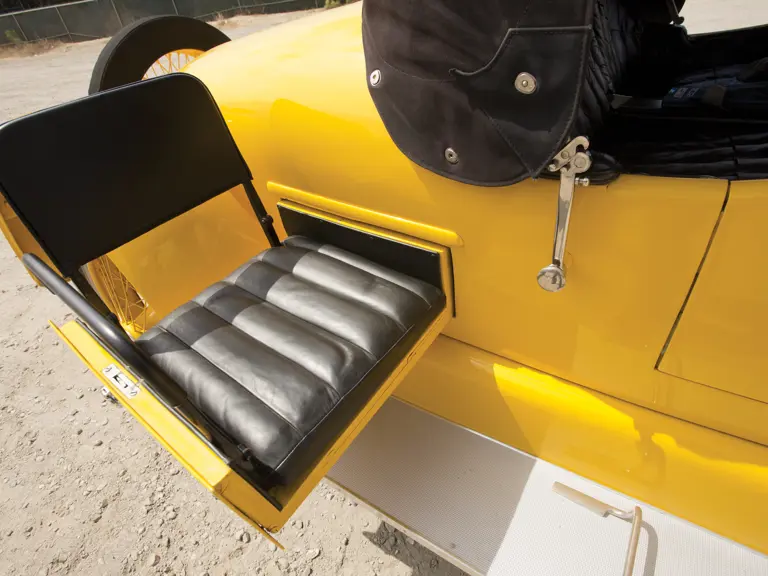
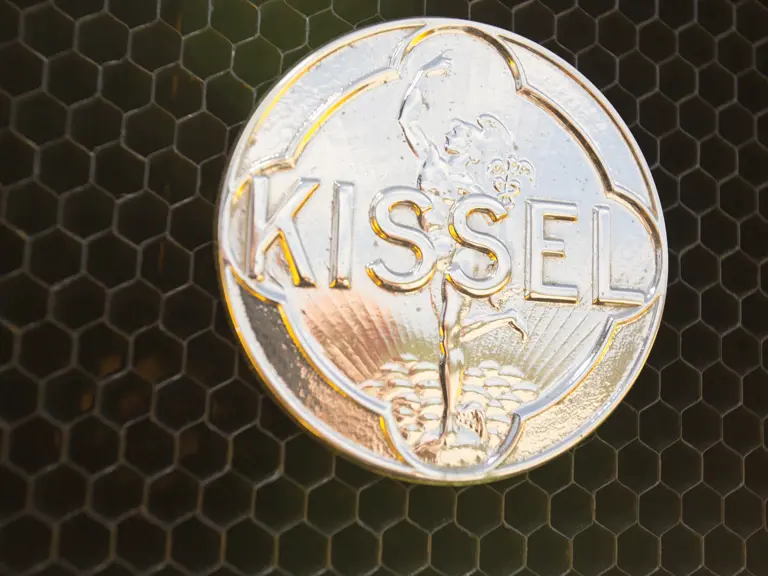
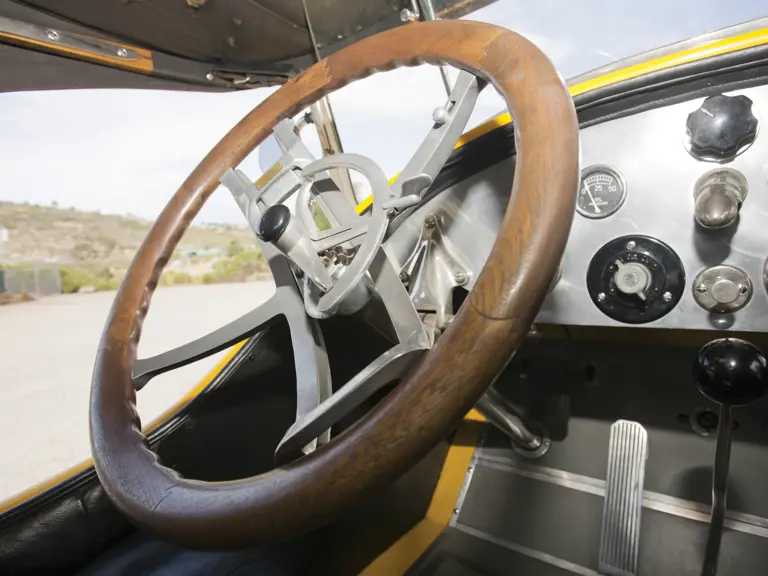
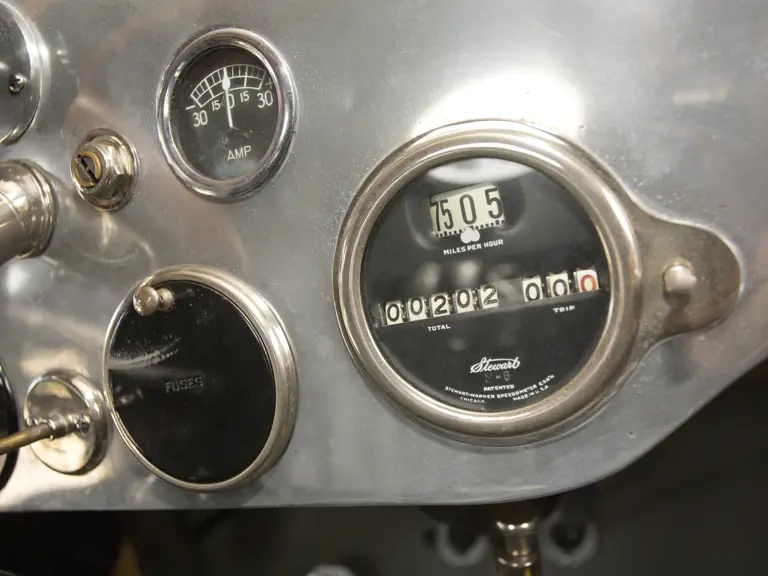



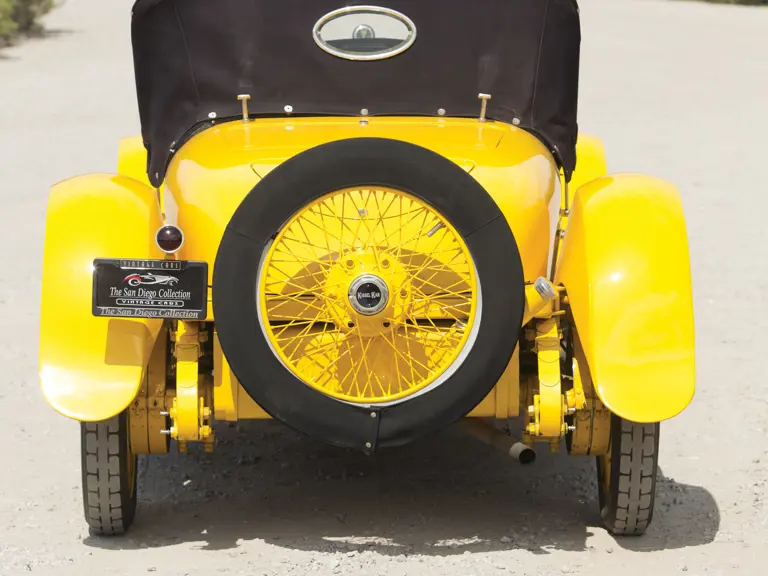
 | Hershey, Pennsylvania
| Hershey, Pennsylvania

